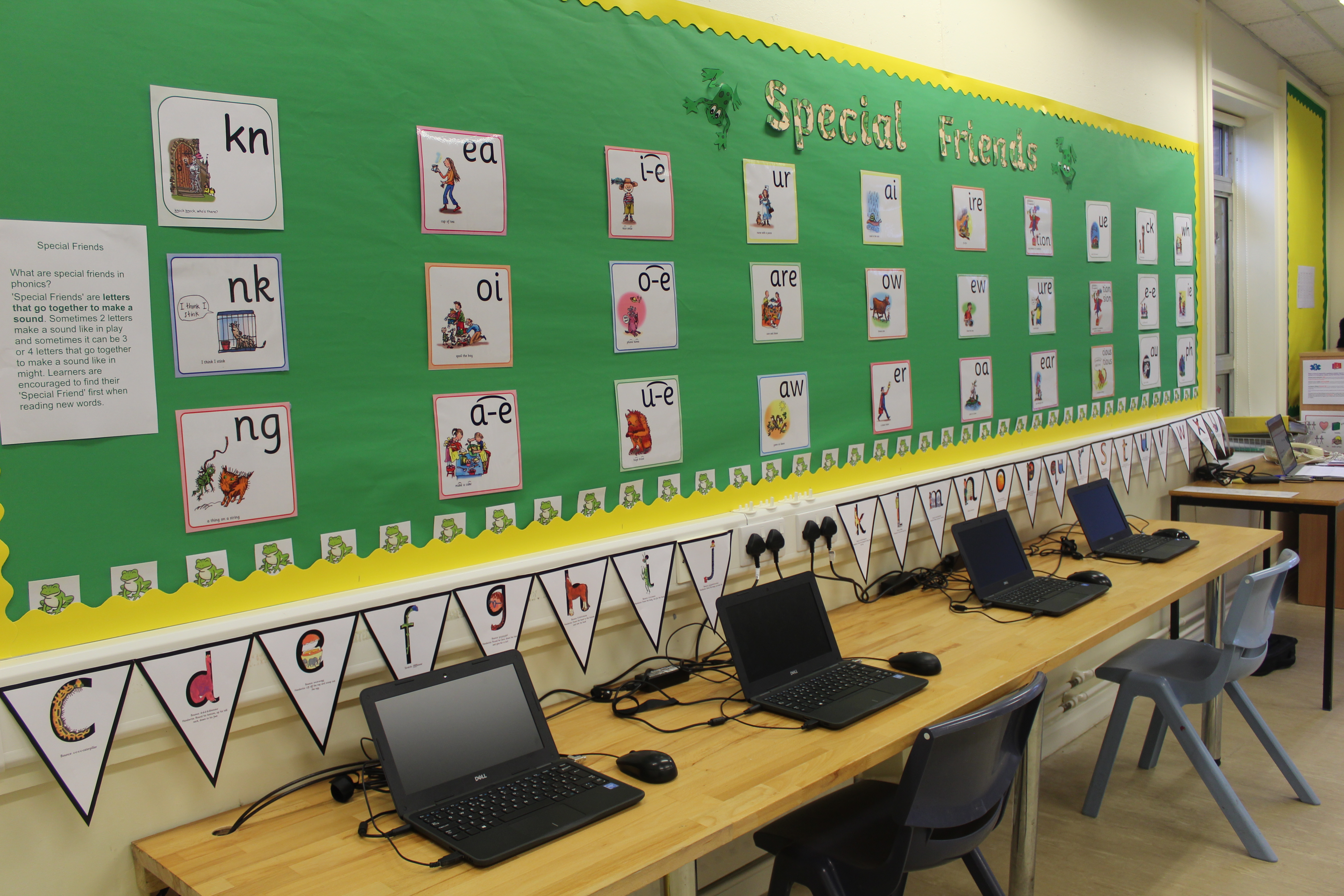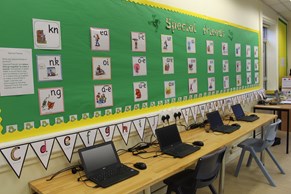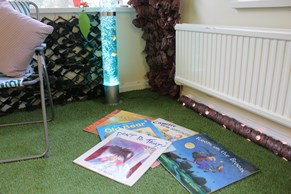Reading Intent
At St Elizabeth’s we aim to ensure a balanced mix of approaches to reading so that learners achieve the skills required, a positive attitude, confidence as well as interest and a life-long love of books.
We aim for learners to develop a positive relationship with reading and use Read, Write Inc., a systematic and synthetic phonics programme to support the teaching of phonics and reading, we want learners to begin to enjoy their journey to read, develop a love of reading and apply the skills they learn.
We aim to ensure that learners:
- Decode letter-sound correspondences quickly and effortlessly, using their phonic knowledge and skills.
- Understand what they read.
- Provide opportunities for work on vocabulary, fluency and reading comprehension
- Provide our learners with the skills and knowledge they need to read by direct instruction, progressing with carefully structured small and cumulative steps
- Use instructional routines that become familiar
- Provide materials that limit distraction, are clear, linear and are easy to follow. Are age neutral or age appropriate and can be adapted further, such as being reduced to individual items.



The Implementation
We group learners homogeneously, according to their progress in reading. We make sure that learners read words/books that are closely matched to their rising knowledge of phonics and the common exception words. This is so that, early on, they experience success and gain confidence that they are readers. Re-reading and discussing these books with staff’s support increasing fluent decoding.
Embedding the alphabetic code consistently will equip the learners with the knowledge and skills to learn to read simple words and sentences. We understand that student with complex needs may take longer than average to formalise independence.
Teaching of RWI will be delivered within our ‘Reading Garden’, this space is designed to suit the requirements to deliver RWI, it is a calm and positive environment, dedicated to reading. This area celebrates steps of progress however small and encourages a love of books. Delivery of reading through RWI will be one to one or in small groups, the individual sessions will be at a suitable pace for the learner. Lessons will be well planned and engaging and motivating for our learners. Take full account of the learner’s individual strengths, weaknesses, knowledge and understanding and profile their needs.
For our pre or non-verbal learners a use of communication strategies can be used as selecting their responses from auditory choices anchored to visual symbols and eye gaze strategies. The use of sensory objects or images can be used to teach learners how letters correspond to sounds.
Read Write Inc. – The Overview
The Read Write Inc. approach is taught considering the 5 P’s
Praise – Learners learn in a positive climate
Pace – A good steady pace is the key to each session to ensure learners are engaged and on task.
Purpose – Every part of the lesson has a specific purpose
Passion – It is the energy, enthusiasm and passion that staff put into the lesson that brings the teaching and learning to life.
Participation - A strong feature of RWI lessons is partner work and the partners’ ‘teaching’ each other.
Phonics and Reading
The learners learn 44 sounds and the corresponding letters/letter groups using simple picture prompts. They learn to read words using Fred Talk and read books that match their phonic knowledge.
The Impact
Monitoring and Assessment –
Regular assessments ensure that learners receive targeted teaching quickly according to their needs
Staff are trained to teach Read Write Inc Phonics and through CPD it ensures all staff use the same language, routines and resources to teach our learners to read.
Staff have access to additional supportive teaching materials via the Ruth Miskin portal. This is to ensure consistency throughout the whole school.

